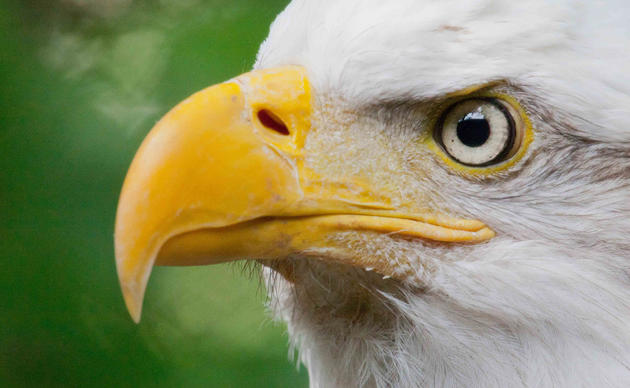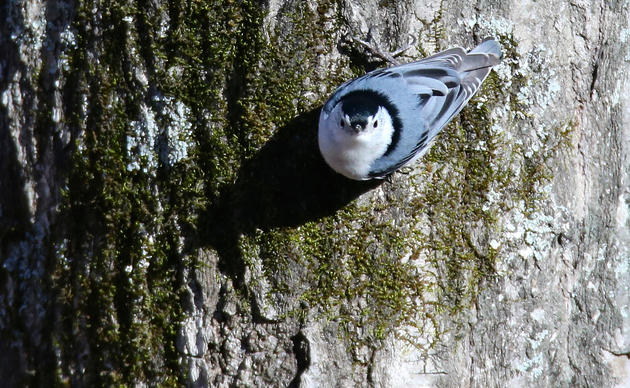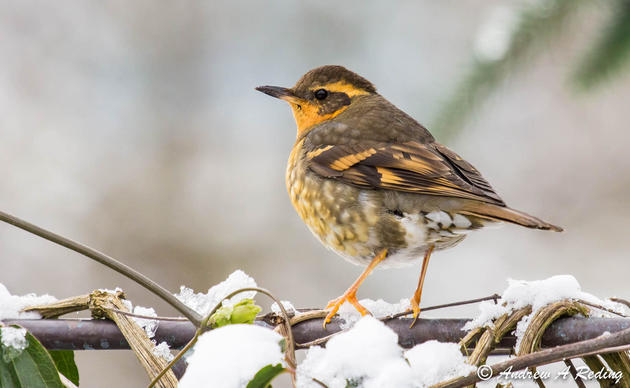Summer field season is every biologist’s favorite time of year. There’s nothing quite like being out in the field, collecting information to help better understand a habitat or species. So, this past May I was thrilled to grab my binoculars and head out to Billy Frank Jr. Nisqually National Wildlife Refuge with Isabel Brofsky, Avian Project Manager at Ecostudies Institute, for a day of Salish Sea Estuaries Avian Monitoring (SSEAM) surveys.
Isabel leads the SSEAM program, a collaborative, multi‑year effort spearheaded by Audubon Washington, the Stillaguamish Tribe, Washington Department of Fish and Wildlife, and Ecostudies Institute. These partners all serve on the Puget Sound Ecosystem Monitoring Program’s (PSEMP) Marine Birds Work Group, coordinated by Audubon Washington, and realized there was a need to fill critical information gaps about how coastal bird species respond to estuary habitat restoration efforts in the Salish Sea.
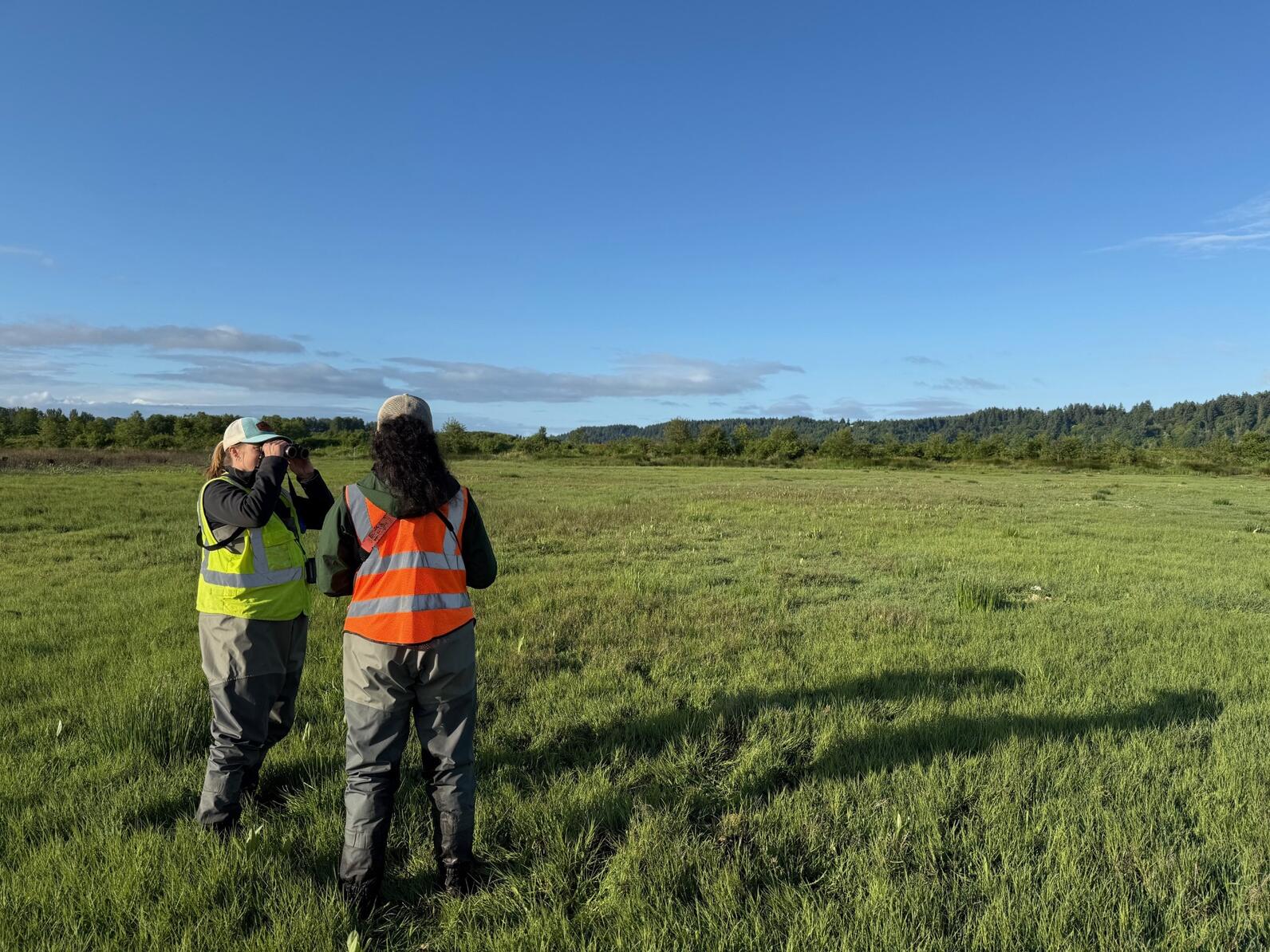
The initiative began in 2017 with the PSEMP Marine Birds Work Group inventorying past estuary monitoring, compiling existing knowledge of tidal‑restoration impacts on birds (Koberstein et al. 2017), and pinpointing design disparities that limited comparability across survey efforts. From 2018 to 2021, regional workshops convened local biologists and habitat managers to clarify monitoring needs. This also included analyzing data for five “narrative” species (Brant, Northern Pintail, Greater Yellowlegs, Dunlin, and Marsh Wren), uncovering environmental drivers of bird distribution in the Salish Sea, and mapping priority monitoring areas throughout Puget Sound (see our Avian Habitat Suitability Models here). Over these eight years, the partners refined a rigorous, grid‑based protocol for surveying waterfowl, shorebirds, secretive wetland birds, and landbirds—species that have experienced significant declines due to coastal development, agriculture, and other land‑use changes.
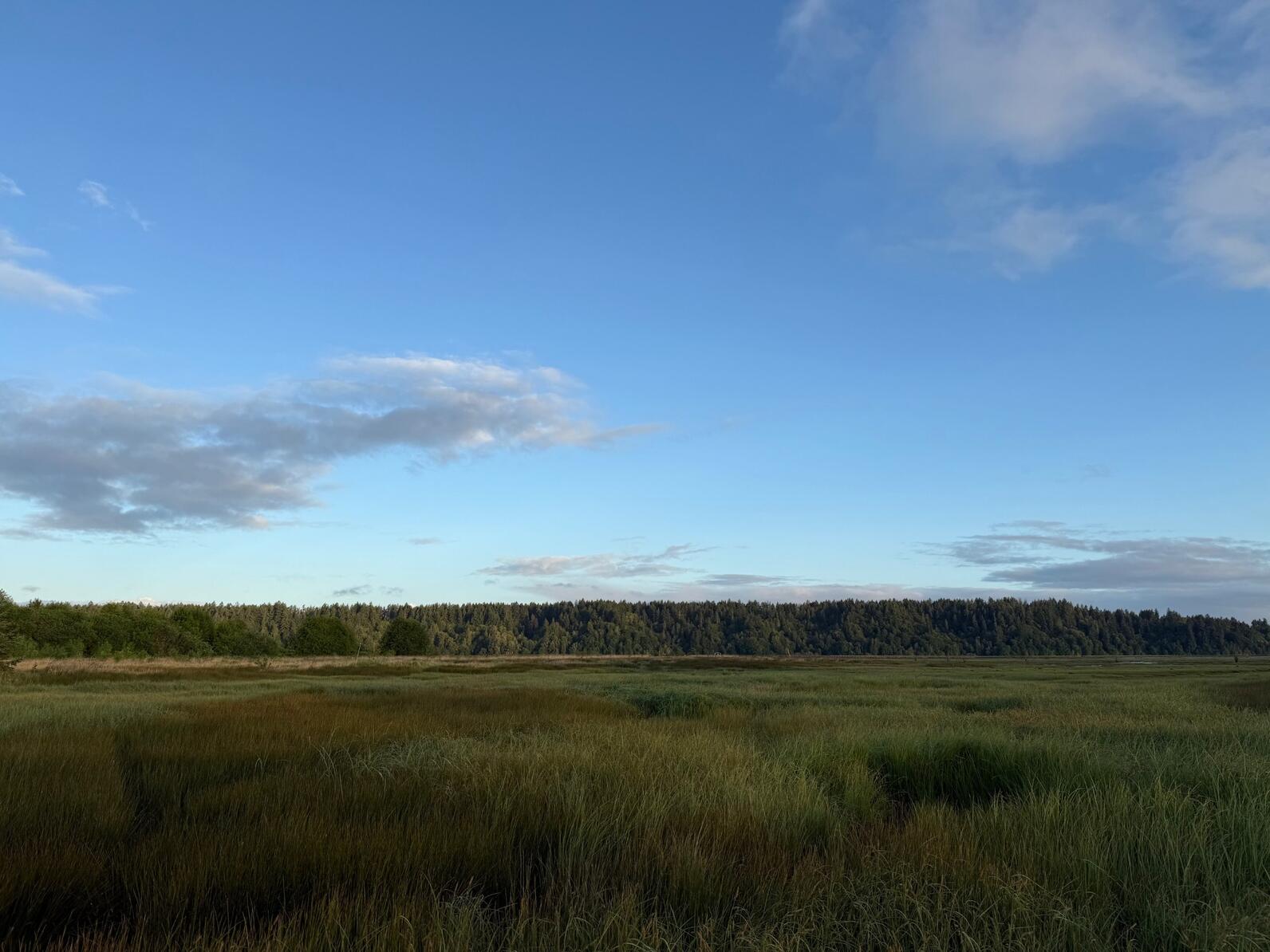
SSEAM surveying efforts fully kicked off in 2024, with 461 surveys conducted across the four pilot survey sites —Padilla Bay, Port Susan Bay, Billy Frank Jr. Nisqually NWR, and Duckabush Estuary—and documented 66 bird species. The 2025 season is already underway, and on my visit to Nisqually NWR we recorded Sora, Virginia Rail, Vaux’s Swift, Marsh Wren, and much more. Between survey points we were able to experience other estuary species that thrive at Nisqually NWR (including a very exciting territorial interaction between a Cinnamon and a Blue-winged Teal).
With the framework now established, Audubon Washington, Ecostudies Institute, and our partners are poised to deepen regional insights into estuary bird responses to restoration and to ensure our data directly inform habitat management efforts going forward. Audubon and Ecostudies Institute are eager to expand this monitoring throughout Puget Sound and the broader Pacific Northwest.











